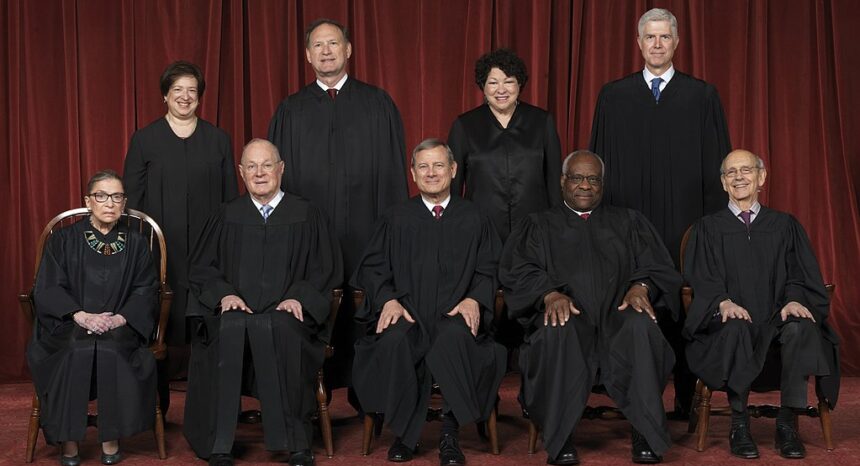New research suggests the U.S. Supreme Court lost public support in recent decades partly because TV news coverage has often framed its decisions as political or insincere.
“Media Coverage and Public Approval of the U.S. Supreme Court,” published in Political Communication, finds that broadcasters regularly frame the court’s actions in terms of political winners and losers, discussing legal tactics and strategies using “the language of sport and war.” Such coverage relies on words and phrases such as “attack,” “bombshell,” “curveball,” “won the battle” and “losing side.”
This kind of framing — referred to as “game-frame” coverage — became more common between 1990 and 2010, the researchers found. Meanwhile, public support for the nation’s highest court fell significantly over that time.
The study’s authors, Matthew Hitt, a political science professor at Colorado State University, and Kathleen Searles, a professor of mass communication at Louisiana State University, report that they are “the first to present evidence of culpability in the mysterious decline in public support for the Court in the modern era.”
“Thus, we may offer an amendment to the truism: To know the Court is to love it, but to watch coverage of the Court is to dislike it,” they write.
Hitt and Searles analyzed more than 1,000 transcripts of broadcast news coverage of Supreme Court decisions between 1990 and 2010. They used transcripts from broadcast networks ABC, NBC and CBS as well as cable networks CNN, MSNBC and Fox News. They also examined public opinion data collected by several research organizations, including Gallup and the Roper Center for Public Opinion Research at Cornell University.
The two researchers also conducted a survey experiment to gauge whether the language TV news media use when covering the Supreme Court influences public perception. For that part of the study, they randomly assigned 404 participants to view a video clip showing one of two different styles of coverage of the same court ruling. One clip presented “principled” coverage, which focused on the policy implications of the decision, legal precedent and the history behind arguments made in the case. The second clip featured game-frame coverage — a discussion of the strategic implications of the decision and who “won” the case.
Here are some of the study’s other big takeaways:
- NBC used a game-frame approach to covering Supreme Court decisions more often than the other networks in the study. CNN did it least.
- People who watched game-frame coverage were less likely to agree with and accept the court’s decision than those who viewed coverage that focused on legal principles.
- “Given increased reliance on the game frame by news broadcasters, at the very least, this work suggests that any effects are unlikely to return to a baseline, and at most, it might be the case that we have not yet seen the full extent of political coverage of the Court. In other words, we may have entered a news environment, dominated by politicized coverage of the Court, from which we cannot return.”
- The researchers note that if the Supreme Court had a press office that issued short summaries of judgments in lay terms, the court would have more control over how its decisions are covered. “A press office could also help the Court manage public-facing communications, and perhaps better mitigate press proclivities toward controversy and conflict.”
Looking for more research on the judiciary? Check out our write-ups on appointing federal judges and how election financing affects the voting patterns of state supreme court judges.
Press secretaries, journalists and editors: Shaping local Congressional news coverage
Perceptions of politicization and public preferences toward the Supreme Court


Expert Commentary